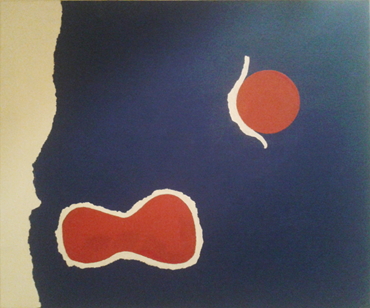No emotional intensity without vulnerability
- Without closeness we cannot experience certain positive emotions in our lives intensively enough. But the same closeness also intensifies all negative emotions.

- We are vulnerable to intense emotions, whether positive or negative.
- Attachment relationships are spots of intense emotional experience and thus of emotional vulnerability.
On the one hand, we have to allow someone to be close to us permanently and reliably if we want to experience intense positive emotions such as love, emotional security or importance for another person in our lives. It also takes this closeness to live with the feeling that someone is really there for me. These are deeply anchored attachment needs of our innate attachment system, which motivate us to engage in proximity to other people and to experience the associated emotions.
Negative emotions of vulnerability
On the other hand, the same closeness also intensifies negative emotions of vulnerability. Especially fear, insecurity, sadness, abandonment, helplessness, exhaustion, shame and guilt. The increased intensity of both positive and negative emotions is often a great challenge in the relationship with our partner.
Vulnerability to intense positive as well as intense negative emotions
Many couples have only limited success in regulating negative emotions. If the relationship is in a crisis, this crisis can also be described emotionally by the fact that it is no longer possible to cope with fear, insecurity, sadness, abandonment, helplessness, exhaustion, shame and feelings of guilt in the relationship without these negative emotions being transformed into (cold or hot) anger.
Likewise, we do not really expect to have trouble expressing positive emotions such as love, happiness, satisfaction, interest, pride in our partner. The same applies to acknowledging emotions such as praise or gratitude. After all, we enter into relationships precisely because this is the only way we can experience such emotions intensively enough and lastingly. But even with intense positive emotions, vulnerability is there! In order to regulate this vulnerability, we keep the positive emotions for ourselves and interrupt the expression instead of expressing them verbally (or in clear gestures) in front of the partner.
Vulnerability to negative emotions
If we transform too often, too fast and too long negative emotions of vulnerability (![]() ) into anger for reasons of self-protection, then we are less vulnerable. But we create above all negative proximity. Stubbornness, false pride or dominance behaviour also belong to these protective emotions. All these are ultimately anger-based reactions.
) into anger for reasons of self-protection, then we are less vulnerable. But we create above all negative proximity. Stubbornness, false pride or dominance behaviour also belong to these protective emotions. All these are ultimately anger-based reactions.
The transformation into anger is the usual "regulatory trick" that we use when we fail to allow intense negative emotions from manifesting themselves in front of our partner. The transformation into anger-based reactions leads either to an attack, for example in the form of criticism, nagging or verbal aggression. This is "hot" anger. Or it leads to a withdrawal in the form of cold anger (silence, avoiding contact, short reactions).
Vulnerability to positive emotions
If, for reasons of self-protection, we do not express the positive emotions for the partner (![]() ), then we are not vulnerable or less vulnerable, but we do not make a connection to the partner.
), then we are not vulnerable or less vulnerable, but we do not make a connection to the partner.
Retaining, interrupting or withholding positive emotions from the partner is the usual "regulatory trick" we use to reduce vulnerability to intense positive emotions. The interruption of positive emotions leads in the long run to insecurity in the partner as to whether the attachment relation is really wanted. For oneself it leads to an altered negative mood.

Self-regulation of emotion
In a relationship the situation regularly arises that the partner does not have the same need, cannot react exactly as one would like it to and even sometimes cannot be there although one really needs him. The attachment to the partner must be maintained despite these inevitable situations. Therefore, we must be able to keep the bond intact by ourselves, without the partner's presence. To a certain extent we are forced to regulate ourselves emotionally.
In the case of negative emotions that we cannot regulate through the partner, we need to be able to comfort ourselves in the form of self-soothing, to cheer ourselves up, to take away our fears and worries alone, to keep calm, to restore a certain confidence and possibly to get help and support from others, etc.
In the case of positive emotions, self-regulation is expressed by not losing contact with the ground through exaggerated enthusiasm and the like. But it also expresses itself through the willingness not to withhold the emotional expression of the positive emotion, but to be the first to risk it, before and not after the partner, although one does not (yet) know whether one's partner reacts just as favourably and positively. It is more difficult to be the first to say: "I love you". In contrast, it is much easier to say "I love you too" as a follow-on. The one who first expresses the positive emotions is more vulnerable. Therefore, the result of a successful (self-) regulation of positive emotions is always to express the positive emotion despite the vulnerability.

Emotional intensity increases vulnerability
The intensity that comes from closeness makes us more vulnerable. We therefore find it risky to show and express intense emotions to a certain degree. Vulnerability arises from the physiological processes to which all genuine emotions are neurobiologically linked. The excitation level or "arousal" (![]() ) is naturally increased when emotions become more intense. Dealing with this natural vulnerability is decisive for whether the partners succeed in establishing and maintaining closeness. Attachments are "spots" of the intensive emotional experience and thus also of the emotional vulnerability.
) is naturally increased when emotions become more intense. Dealing with this natural vulnerability is decisive for whether the partners succeed in establishing and maintaining closeness. Attachments are "spots" of the intensive emotional experience and thus also of the emotional vulnerability.
Emotional intensity is physical
Emotional intensity increases the pulse, accelerates breathing, increases muscle tension, the body becomes warmer (sweating), physical balance feels shakier, blood circulation is accelerated. Complex processes such as hunger, sleep and attention (concentration) are also strongly regulated by emotional intensity.
Emotions have a strong anchoring in physical, physiological processes. This is why we can feel emotionally hurt, as if someone had actually caused us a physical injury. It is precisely this close connection between emotions on the one hand and physical processes on the other that constitutes vulnerability. Real feelings, whether positive or negative, are strongly anchored in the body. It is impossible to completely suppress or manipulate physiological processes. Feelings and emotions that are fake or simulated are characterized by the fact that they have little "physicality" (false facial expressions, etc.).


